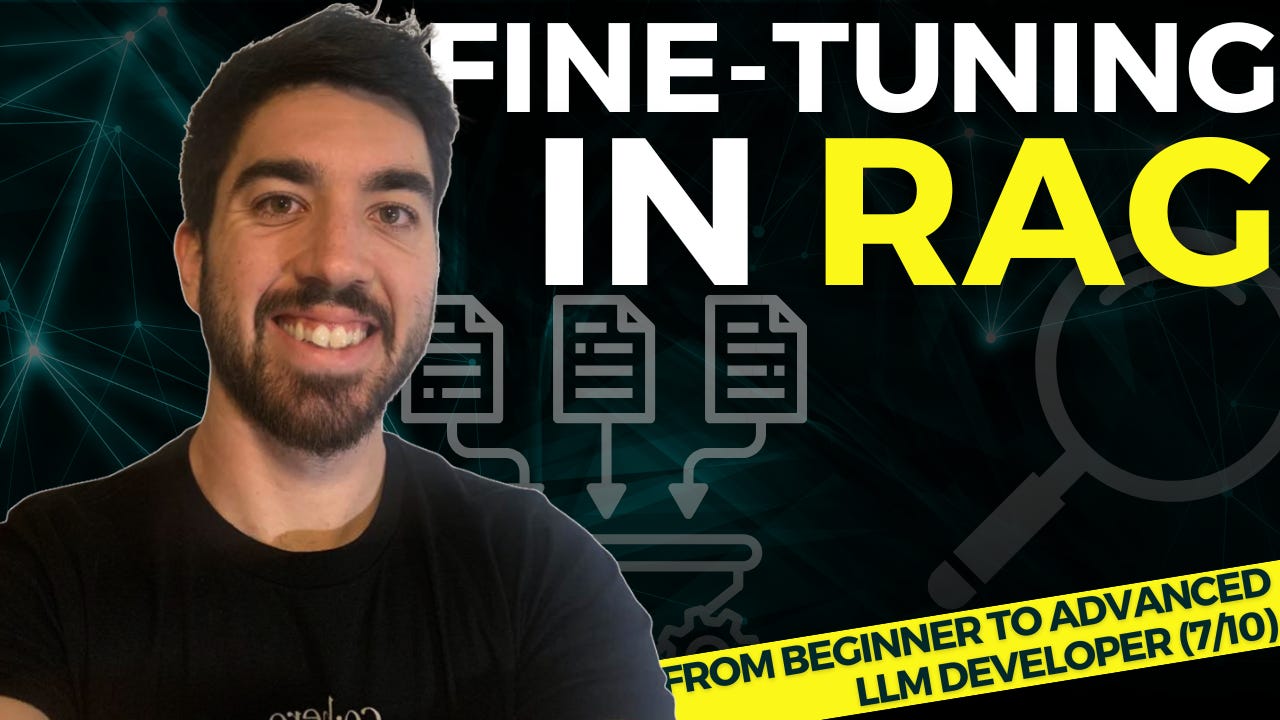Good morning!
Let’s dive into fine-tuning large language models (LLMs) for Retrieval-Augmented Generation or RAG.
So, you’ve got this massive, pre-trained language model like the recent Llama 405B or GPT-4 (or even o1, o3 now). Think of it as a brainy student who’s read every book in the library. Fine-tuning is like giving this student some extra tutoring in a specific subject like linear algebra. We take this pre-trained model and train it a bit more on a specialized dataset containing only math problems to make it really good at it. This makes the model much smarter about the particular topic you’re interested in.
Fine-tuning is not a competitor to RAG but can complement it. By training the model on specific data, the retriever also finds more relevant documents, and the generator can give more accurate answers since both understand the topic better. This process cuts down on errors, making responses clearer and more precise. It helps RAG perform better in areas like customer support or technical advice, and it also improves how the model handles complex or rare questions. Plus, fine-tuning ensures the retriever and generator work together smoothly, leading to high-quality, relevant answers. Overall, fine-tuning makes RAG models much more effective and efficient at providing the right information. Still, there’s a big downside: fine-tuning is complex to do and costly. You need to build the right dataset, understand the fine-tuning process and iterate to have it right with the right combination of parameters, which all lead to lots of extra costs.
In this iteration, we dive into why and when you should fine-tune your LLM in a RAG system. This is a useful concept for an AI engineer today who is playing with LLMs. Let’s dive right in with the 7th video out of 10 we share from our Towards AI new course!
Watch the video (or read the written article):
Discover the Skills You Need to Thrive in AI Development! This is the second video in our "From Beginner to Advanced LLM Developer" series by Towards AI, part of an 85+ lesson hands-on course designed to take you from zero to building scalable, cutting-edge LLM products.
Whether you're a software developer, ML engineer, aspiring entrepreneur, or an AI/CS student, this course gives you the real-world expertise to build, deploy, and manage advanced AI solutions. You'll work with tools like Python, OpenAI, LlamaIndex, Gradio, and others, while gaining invaluable insights into the entrepreneurial mindset and communication skills unique to the AI world.
💡 What makes this course stand out?
Build your first advanced AI product and portfolio-worthy projects.
Learn practical LLM skills like Prompting, RAG, Fine-Tuning, and Agent Design.
Industry-aligned lessons to help you transition into high-demand LLM developer roles or scale AI innovation in your company.
This journey goes beyond code—it’s a roadmap to making your competitive edge with tons of information on the future of AI development, which we termed "LLM developer."
🎯 Ready to take the leap? Check out the course here and don’t forget to explore our book (or e-book), Building LLMs for Production, for an even deeper dive into the LLM revolution.
And that's it for this iteration! I'm incredibly grateful that the What's AI newsletter is now read by over 20,000 incredible human beings. Click here to share this iteration with a friend if you learned something new!
Looking for more cool AI stuff? 👇
Looking for AI news, code, learning resources, papers, memes, and more? Follow our weekly newsletter at Towards AI!
Looking to connect with other AI enthusiasts? Join the Discord community: Learn AI Together!
Want to share a product, event or course with my AI community? Reply directly to this email, or visit my Passionfroot profile to see my offers.
Thank you for reading, and I wish you a fantastic week! Be sure to have enough sleep and physical activities next week!
Louis-François Bouchard






